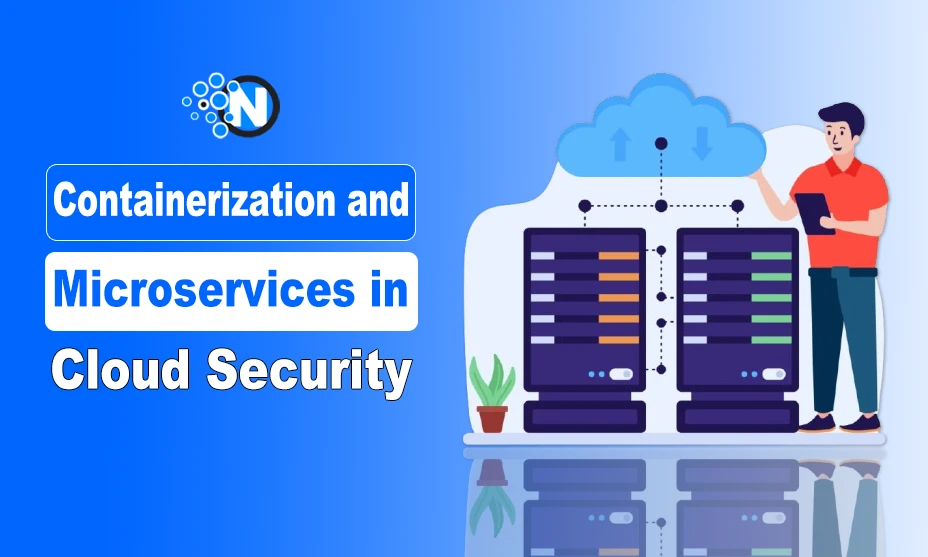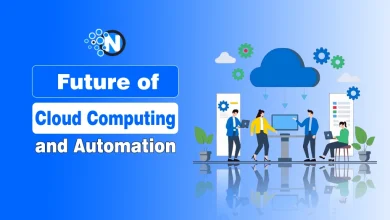Impact of Containerization and Microservices on Cloud Security

Cloud computing has revolutionized how firms implement and grow their applications in the market. As digital infrastructures grow, two architectural shifts have gained significant momentum: The two major trends are containerization as well as microservices. Both are optimal platforms in terms of flexibility, scalability, and productivity. But with all these advantages comes a fresh set of complications in areas such as security in cloud computing.
This paper examines how containerization and microservices on cloud network security practices, highlighting the emerging risks and offering strategies to mitigate them.
What Are Containerization and Microservices?
Containerization is a technique that involves packaging an application together with all its requisites into a small and portable entity known as a container. This kind of portable structure enables it to perform in a sequential manner in different environments ranging from a developer’s Local computer to Cloud environments. Processes are encapsulated to prevent interference between different parts of the software and its distribution.
While monolith applications are large and complex, microservices, on the other hand, divide applications into a set of small services that are network-enabled. Every microservice is designed to perform a particular operation, and therefore, it is easy to maintain, add, replace, or enhance without necessarily affecting the other services. In contrast with monolithic designs, which are the application of a single architecture, microservices allow for a decentralized model.
Both of these technologies help with the ability to do agile development and rapidly scale but bring with them new security challenges that were less of an issue with monolithic applications.
The Shift to Cloud-Based Architecture
The cloud-based structure has changed the process of application development and deployment. It supports the use of microservices, which divide large, complicated systems into smaller, more manageable services, and containers, which bundle applications and their dependencies.
This strategy offers different benefits, such as increased resource efficiency, quicker deployment cycles, and higher scalability.
Cloud network security now faces additional difficulties due to using cloud-native architectures. Because microservices are dispersed and containers are dynamic, the security landscape is more complicated and needs creative security strategies.

Containerization and Its Impact on Cloud Network Security
Application deployment is completely transformed by containerization technology, which is demonstrated by platforms like Docker and Kubernetes. Applications and their runtime environments are reduced by containers, which guarantees consistency between the development and deployment stages.
From the standpoint of cloud network security, containerization offers the following benefits:
1. Isolation: In the event of a security compromise, containers reduce the possibility of lateral movement by offering a degree of isolation across applications.
2. Immutability: Since container images are usually unchangeable, it is simpler to keep an environment that is safe and consistent.
3. Rapid patching: By swapping out entire containers, security updates may be implemented swiftly and the window of vulnerability is shortened.
However, there are certain security issues with containerization as well. Because containers are transient in nature, traditional security monitoring may be more challenging, and security flaws may result from platform setup errors related to container orchestration.
Microservices and Their Role in Enhancing Cloud Network Security
Monolithic programs are divided into more manageable, independently deployable services via the microservices design. The following are some advantages of this strategy for cloud network security:
1. Granular security controls: More precise control is possible because each microservice can have its own security policy.
2. Reduced attack surface: The possible impact of a security breach can be minimized by isolating services.
3. Easier patches and updates: You can patch or upgrade individual services without impacting the program as a whole.
Microservices’ distributed architecture, however, also makes it more difficult to manage security across a number of services and their interactions.
Using Containerization and Microservices on Cloud Security
Companies should think about implementing the following strategies to handle the difficulties associated with microservices and containerization while maximizing their security benefits:
1. Implement strong access controls: Make use of identity and access management (IAM) programs that work well in settings that are containerized and microservices-based. Adhere to the least privilege concept and conduct frequent access permission audits.
2. Secure container images: Prior to deployment, conduct thorough security scanning of container images to find vulnerabilities. To guarantee image integrity, use trustworthy registries and put signing techniques in place.
3. Network segmentation: To create fine-grained network segmentation, take advantage of the granularity that microservices offer. To control and safeguard service-to-service communication, use service meshes.
4. Constant recording and monitoring: Put in place reliable logging and monitoring systems that can manage containerized environments’ dynamic nature. Real-time security threat detection and anomaly detection can be achieved by utilizing AI-powered analytics.
5. Automate security policies: To guarantee that security policies are uniformly applied across all containers and microservices, use security-as-code techniques. Make use of policy engines that can adjust dynamically to changing environmental conditions.
6. Encrypt data in transit and at rest: Use robust encryption for data that’s inside containers and in transit between microservices. Make use of cloud-native architecture-compatible key management services.
7. Implement runtime protection: Make use of container runtime security solutions to quickly identify and stop threats, such as unauthorized access attempts and questionable activity.
8. Conduct regular security assessments: For containerized and microservices setups, conduct regular security assessments and penetration tests.
A Novel Approach to Security for Cloud Networks
Building and implementing cloud-native apps using Containerization and Microservices offers a new way of thinking. While these technologies create further difficulties for cloud network security, they also offer opportunities to implement more comprehensive and detailed security policies.
Businesses can enhance their security infrastructures’ resilience, adaptability, and efficacy against contemporary cyber threats by capitalizing on the distinctive features of microservices and containers. However, in order to fully reap these advantages, security procedures and mindset must change to embrace automation, ongoing monitoring, and a thorough integration of security into the development and deployment phases.
The methods for protecting cloud networks must advance along with cloud-native technology. Businesses can make sure they are well-positioned to safeguard their vital assets. Data in the cloud-native age by keeping up with the latest advancements and best practices in securing containerized and microservices systems.




